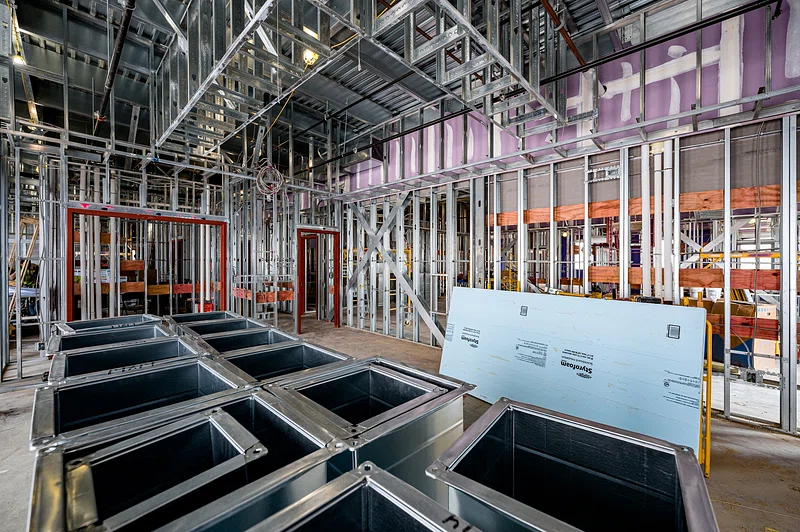Key Takeaways
- Smart insulation systems utilize integrated sensors to monitor building conditions in real time, providing actionable data for optimizing energy use and maintenance schedules.
- Bio-based and recycled insulation solutions promote sustainability, offering environmentally friendly alternatives that deliver exceptional efficiency and indoor comfort.
- Innovative application techniques, such as spray foam and prefabricated panels, streamline the installation process and enhance thermal performance.
As the landscape of commercial construction continues to transform, the importance of advanced insulation strategies has become more pronounced than ever. Modern commercial buildings must not only comply with increasingly strict codes and efficiency standards but also deliver on the promises of lower operational costs and a reduced carbon footprint. Today’s property owners and managers face growing expectations from tenants, regulatory bodies, and environmentally conscious investors. In response to these demands, traditional insulation techniques are giving way to contemporary solutions that provide resilience, improved health, and intelligent energy management. Understanding these groundbreaking approaches—including the most advanced methods in commercial insulation—is no longer optional but essential in delivering high-performing, future-ready commercial properties. Adopting these solutions is crucial for optimizing operations, minimizing environmental impact, and enhancing building value in a competitive market. Modern insulation utilizes innovative materials and technology to improve energy efficiency, a crucial factor for achieving net-zero goals and attracting eco-friendly tenants. Today’s solutions not only enhance energy savings but also improve occupant comfort, support facility management, and promote sustainability. This article examines key advancements, including high-performance insulation, smart monitoring systems, sustainable materials, and advanced installation methods.
Smart Insulation Systems
The integration of digital intelligence into building design has ushered in a new era for insulation, including home insulation. Smart insulation systems embed compact sensors and digital controls directly into the insulation layers, allowing for seamless integration. These innovative solutions monitor key metrics—including temperature, humidity, and even vibrations—around the clock. When connected to advanced Building Management Systems (BMS), these insulation systems supply real-time data, enabling facility managers to identify inefficiencies or developing issues well before they become costly problems. By leveraging predictive analytics, property teams can optimize HVAC operations, prevent condensation and mold growth, and reduce energy waste during peak demand periods. This not only extends the lifespan of the insulation but also significantly improves tenant comfort, reduces operational disruptions, and helps maintain compliance with evolving codes. Companies are increasingly viewing smart insulation as a foundation for intelligent building operations, future-proofing assets while lowering ownership costs.
Sustainable Insulation Options
As environmental concerns take center stage, the construction sector is experiencing a surge in demand for sustainable insulation alternatives. Bio-based materials, such as hemp fiber, sheep’s wool, recycled cotton denim, and even rapidly renewable mycelium, offer compelling eco-friendly options. These products require fewer natural resources to produce, often have low embodied carbon, and are biodegradable at the end of their service life. Sustainable insulation is not only better for the planet but also contributes to healthier indoor environments by minimizing off-gassing and VOC emissions. Additionally, these materials have earned recognition in certification programs such as LEED and WELL, positioning properties as leaders in sustainability and wellness. Even recycled materials, such as cellulose derived from post-consumer paper, are now engineered for exceptional thermal and acoustic performance. Embracing these options enables property owners to enhance their sustainability profiles, appeal to environmentally conscious tenants, and future-proof investments against increasingly stringent regulations and growing environmental awareness.
Innovative Application Techniques
Insulation effectiveness does not rely solely on materials—how these materials are applied is equally crucial. Among today’s most popular options, spray foam insulation remains the leading choice, offering unmatched versatility and efficiency. Spray foam expands to fill every nook and cranny, seamlessly sealing building envelopes against drafts, moisture, and thermal bridges that allow heat to escape. This level of coverage is especially critical for retrofits, complex floor plans, or buildings with irregular structural elements.
Continuous Insulation Systems (CIS) are also gaining momentum, particularly in new construction. These systems wrap the entire exterior in a continuous layer of insulation, eliminating thermal breaks or cold spots that could reduce system effectiveness. The result is a building envelope that maintains consistent temperatures and drastically reduces heating and cooling needs. Innovations in digital modeling—such as 3D computer-aided design (CAD) and CNC-fabricated prefabricated insulation panels—allow insulation to be manufactured off-site to precise specifications. This not only accelerates project timelines and reduces waste but also elevates installation quality, performance, and durability. For property stakeholders, embracing innovative installation methods helps maximize both short-term and long-term returns. Source
Fire Safety Considerations
As the sophistication of insulation materials and installations increases, so too does the need for stringent fire safety measures. Not all modern insulation is inherently fire-resistant. Selecting products that comply with local fire codes—and are specifically rated for commercial use—is essential to safeguarding both properties and occupants. Today’s fire-safe solutions include mineral wool, inherently non-combustible, and specially engineered foams that contain advanced fire retardants. Strategic fire risk assessments, implemented in conjunction with passive fire protections such as fire-stopping barriers, ensure that insulation upgrades do not compromise building safety. Regular reviews and code compliance checks are vital, as is comprehensive documentation to demonstrate due diligence in both design and ongoing management.
Maintenance and Upkeep
Proactive maintenance is crucial for maintaining long-lasting insulation. Regular inspections can identify issues early, like moisture, settlement, or damage from renovations or pests. Moisture control is vital, as trapped moisture damages insulation, promotes mold, and reduces R-value. Building managers should include insulation reviews in routine maintenance, such as air quality tests, thermal imaging, and sensor checks. A thorough plan preserves energy, extends asset lifespan, protects health, and ensures compliance. Modern insulation strategies create energy-efficient, resilient, and sustainable buildings. High-performance insulation cuts costs, reduces emissions, and keeps properties competitive and compliant with standards. Using advanced insulation helps property teams boost value, attract tenants, and lead in eco-conscious markets.
- Zimatejigemo – Unlocking the Fusion of Creativity, Identity, and Innovation!
- Tinaypimatelate – The Revolutionary Concept Shaping the Future of Innovation!
- Limhuloxidpov – A Complete Guide to Understanding This Unique Concept!
- Zaxtexporoz – Exploring the Emerging Concept of Innovation and Digital Transformation!
- Lekulent – The Breakthrough Wellness Solution Taking the Health World by Storm!






